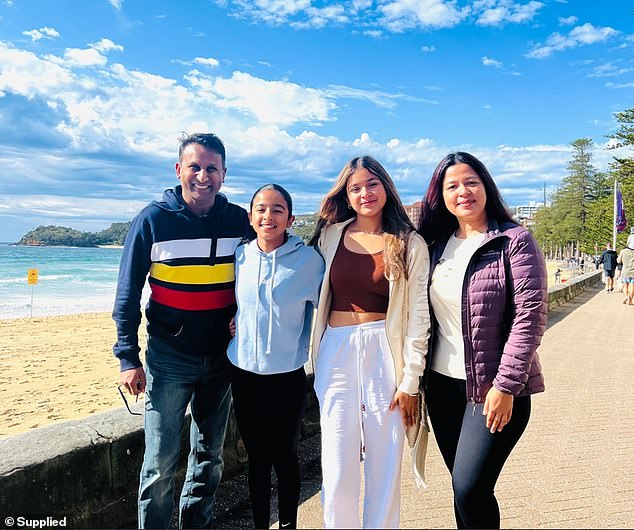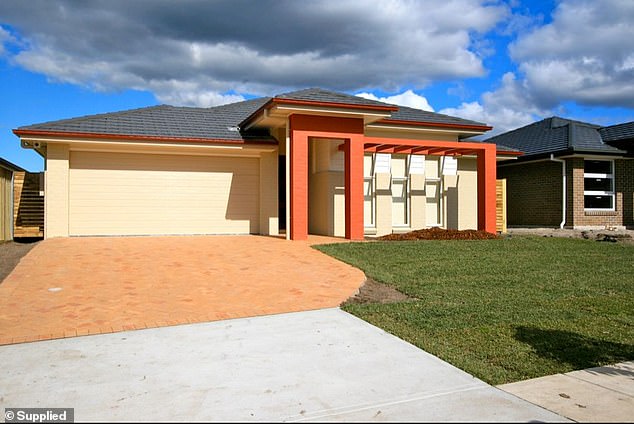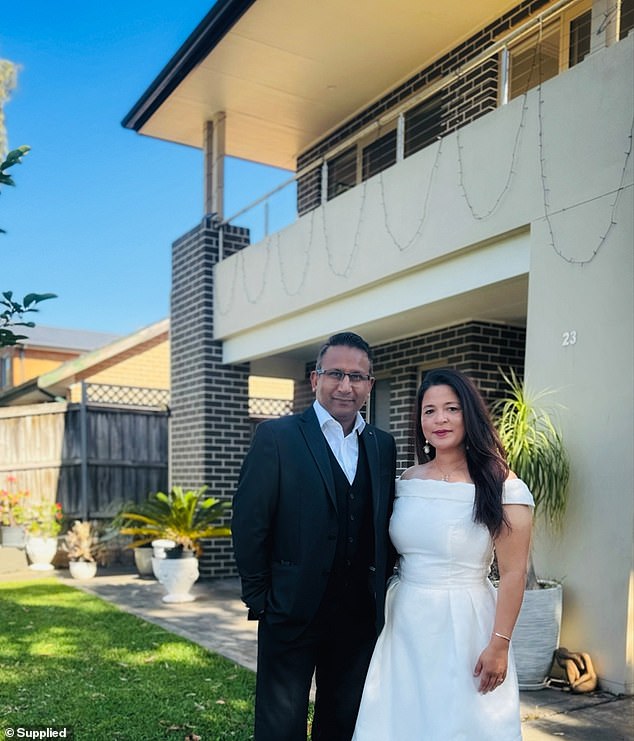A savvy migrant couple who own 18 investment properties are advising Australians against buying a house or unit to live in if their goal is to live in an upmarket suburb.
Rasti Vaibhav, 48, and his wife Rupali Rastogi, 43, came to Australia in 2006 with a background in IT and banking.
They only had a 10 per cent mortgage deposit when they started their investment journey in 2011 by buying land and building a $440,000, four-bedroom house in the Newcastle suburb of Fletcher.
Now, they own an impressive portfolio of 18 properties around the country – in Sydney‘s outer west, Melbourne‘s north, on Brisbane‘s fringes and south of Perth.
The investment properties cost them $5.8million total – and they conservatively estimate they would now be worth $11.3million.
To Mr Vaibhav, the biggest mistake Australians can make is spending years saving up for a mortgage deposit to live in a nice suburb of Sydney, as an owner-occupier – only to find prices have increased and put their dream out of reach.
‘It’s very emotional – “I live in my own home and I can choose to change the décor as and when I like it” – but just be aware that’s very costly,’ Mr Vaibhav told Daily Mail Australia.
‘The traditional way of what people have learnt about debt… is that “I need to have my own home and then when I am actually paid off, then I’ll be looking at investments”.’
Mr Vaibhav and his wife have turned this on its head – choosing to live a much cheaper life renting at Narraweena, near Dee Why, on Sydney’s northern beaches, rather than buying their dream $3.5million home nearby.

An Indian-born couple who own 18 investment properties are urging Australians against buying a house or unit to live in

Rasti Vaibhav, 48, and his wife Rupali Rastogi, 43, started their investment journey in 2011 by buying land and building a $440,000 house in the Newcastle suburb of Fletcher with only a 10 per cent mortgage deposit (they are pictured far left and far right with their daughters Myra, 13 and Jia, 16)
Meanwhile, as house prices grow at a much faster pace than wages, the couple have set themselves up for life by nurturing an impressive portfolio.
Mr Vaibhav said his annual rent of $100,000 was much cheaper than repaying $230,000 a year to the bank for the same kind of house in the area a short walk to the sand.
‘The price in Sydney has been going up and up and up,’ Mr Vaibhav said.
Sydney’s median house price is now approaching $1.5million, which means those saving up for a 20 per cent deposit and stamp duty end up being priced out.
‘They have to keep saving, keep earning and if you look at the average rate of saving, that will take a few years for them to get to that point but by the time they get there, the price has already shot up further,’ he said.
‘It becomes unaffordable for a lot of people on average.
‘We chose the path that’s not so conventional.
‘It’s much easier to think about rent-vesting. Live where you want to live for the lifestyle, for the friends, for the school, for the workplace.’

They only had a 10 per cent mortgage deposit when they started their investment journey in 2011 by buying land and building a $440,000, four-bedroom house in the Newcastle suburb of Fletcher (pictured)

Their portfolio of 18 properties was bought for $5.84million which they estimate would now conservatively be worth $11.36million (pictured is house at Lakelands south of Perth)
Ms Rastogi said that after living at Epping in the city’s north, they moved to the northern beaches and rented, first in North Curl Curl, then Narraweena, to be near a selective school – and the ocean.
‘Our daughter always really wanted to live next to the beaches just for the lifestyle,’ she said.
The family believed that was better than buying a house to be an owner-occupier in a far, outer suburb that was a long way from the beach and the city.
‘When people can’t afford to live in their desired suburb, what they do is they go a bit more further and when they’re priced out, they go further out and all of a sudden, they realise they are so much (more west) to the CBD that they’re spending about one-and-half hours one-way to their workplace,’ Mr Vaibhav said.
‘To us, saving that three hours per day is more important.
‘It’s also about the time and the peace that they’re able to spend time with their loved ones in pursuing their hobbies that they want to do.’

Instead of saving up to buy a $4million house on Sydney’s northern beaches, the parents with two teenage daughters are renting at Narraweena, near Dee Why
Mr Vaibhav argued renting in an upmarket suburb, despite the prospect of eviction, was a risk worth taking, to build a property portfolio and have a desirable lifestyle.
‘We are actually at the whims of our landlord – there’s a risk we are taking on our lifestyle that we’re not sure 100 per cent that we will not be asked to leave the property,’ he said.
‘But we have always signed leases that gives us surety – currently, we’re on a two-year lease; it’s kind of a house for us for the next two years.’
The couple, with a background in IT, have lived in eight rental properties since moving to Australia from Singapore in 2006, two years after they married.
During the Global Financial Crisis, they leased a home at Kensington near the University of New South Wales as Mr Vaibhav studied for a Master of Business Administration, while his wife became the main breadwinner working as a Westpac insurance analyst.
Even on a combined income of $200,000, a little later, they realised saving up to live in a rich suburb of Sydney was beyond their reach – and saw an opportunity to build up a portfolio of houses in more affordable suburbs.
‘I learnt that money is not enough here, even as professionals in a good industry,’ Mr Vaibhav said.
‘We realised the cost of living was so high and there’s not much we can do about owning a home and paying it off as a loan.’
After buying in Newcastle, they bought investment properties at Campbelltown and Dharruk in western Sydney, the New South Wales Central Coast, Melbourne’s north, Logan, Ipswich and Caboolture near Brisbane and Lakelands and Warnbro south of Perth.
‘We really want to keep it very, very affordable,’ he said.
A young person daunted about high prices in Sydney can look for a house selling for $600,000 in an outer suburb of another capital city, and capitalise on good rental yields and capital growth as an investor, he said.
‘They can choose to start making that money work harder for them,’ he said.
Rising prices also meant someone could borrow against that property to buy another one, having more leverage in getting a loan as population growth fed house price increases.
‘When it goes up in value, you go extract equity out again and do it again, treating this as a business,’ he said.
Investment properties incur a capital gains tax with a 50 per cent discount while owner-occupier homes are free of the capital gains tax.
‘Rent-vesting isn’t about choosing between a home or an investment; it’s about having both,’ Mr Vaibhav said.
The couple have, since 2020, run buyers’ agency Get RARE Properties or Get Rich and Retire Early.
Eventually, they want to live in their own home as owner-occupiers but are achieving this as investors first – planning to eventually sell several houses to ultimately buy their dream home.
‘We have just delayed our buying a home – it doesn’t mean that we’ll never own our own home,’ Mr Vaibhav said.
Rasti Vaibhav is the author of The Property Wealth Blueprint and the co-founder of Get RARE Properties with his wife Rupali Rastogi
